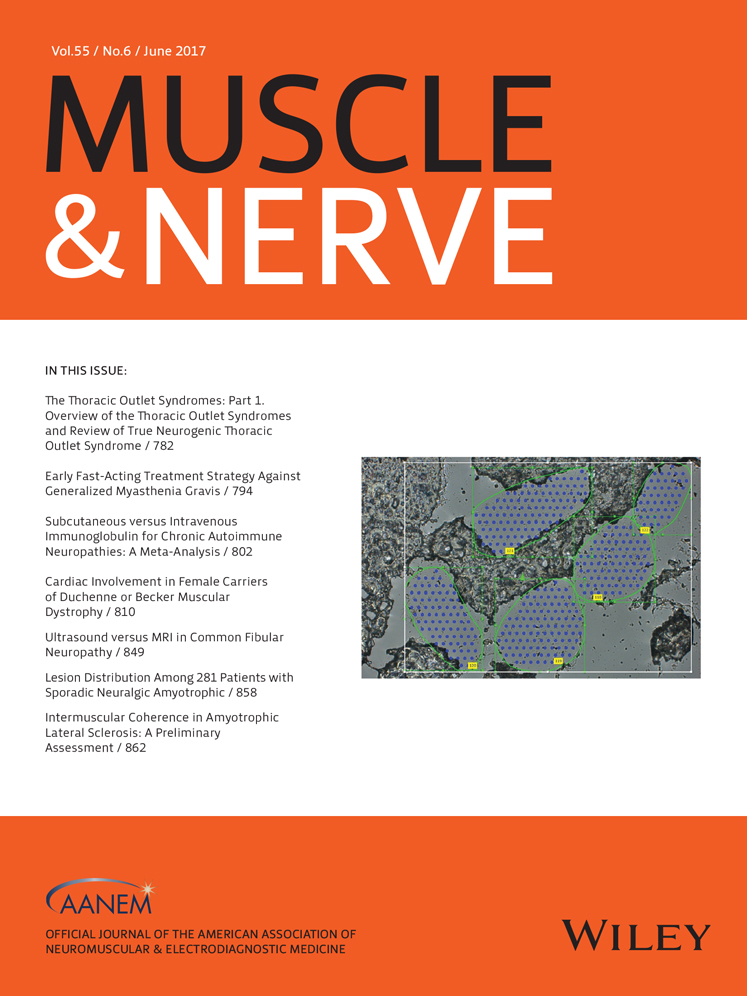Ultrasound versus MRI in common fibular neuropathy
Funding: This study was partially funded by the University of Genoa.
ABSTRACT
Introduction
We prospectively compared ultrasound (US) and MRI in patients with common fibular neuropathy.
Methods
Forty adult patients with clinical suspicion of common fibular neuropathy and 40 healthy controls underwent both US and MRI. US and MRI datasets were randomized for prospective reading.
Results
The overall sensitivity of US and MRI for diagnosing fibular neuropathy was 90% (95% confidence interval [CI], 79.7%-97.3%) and 87.5% (95% CI, 71.55%-93.1%), respectively. The overall specificity of US and MRI was 92% (95% CI, 77.45%-96.1%) and 85% (95% CI, 73.3%-94.4%), respectively. The overall sensitivity and specificity of US combined with MRI were 94% (95% CI, 0.80%-0.99%) and 84% (95% CI, 0.70%-0.91%), respectively. Overall intra- and inter-observer agreements among 3 readers were 0.76% (95% CI, 0.62%-0.85%) and 0.74% (95% CI, 0.65%-0.81%).
Conclusions
US diagnostic accuracy for common fibular neuropathy was slightly higher than that of MRI. Muscle Nerve 55: 849–857, 2017




